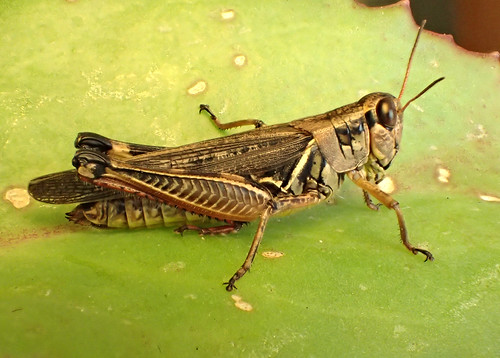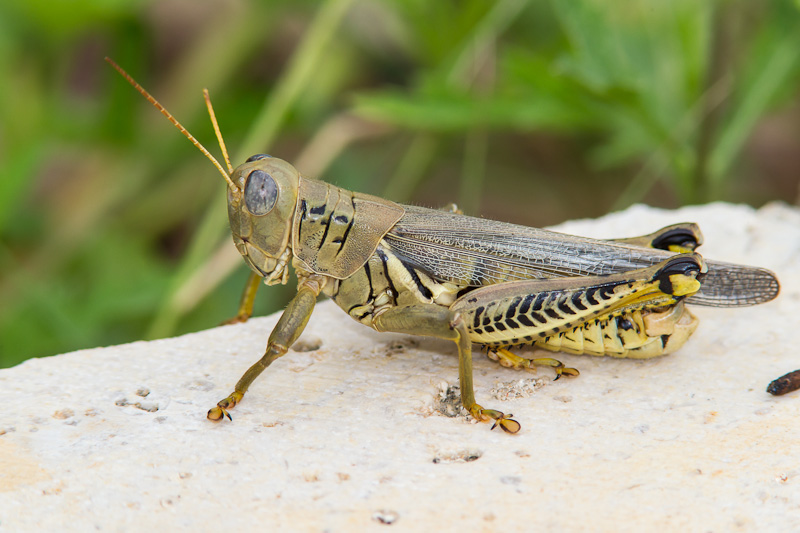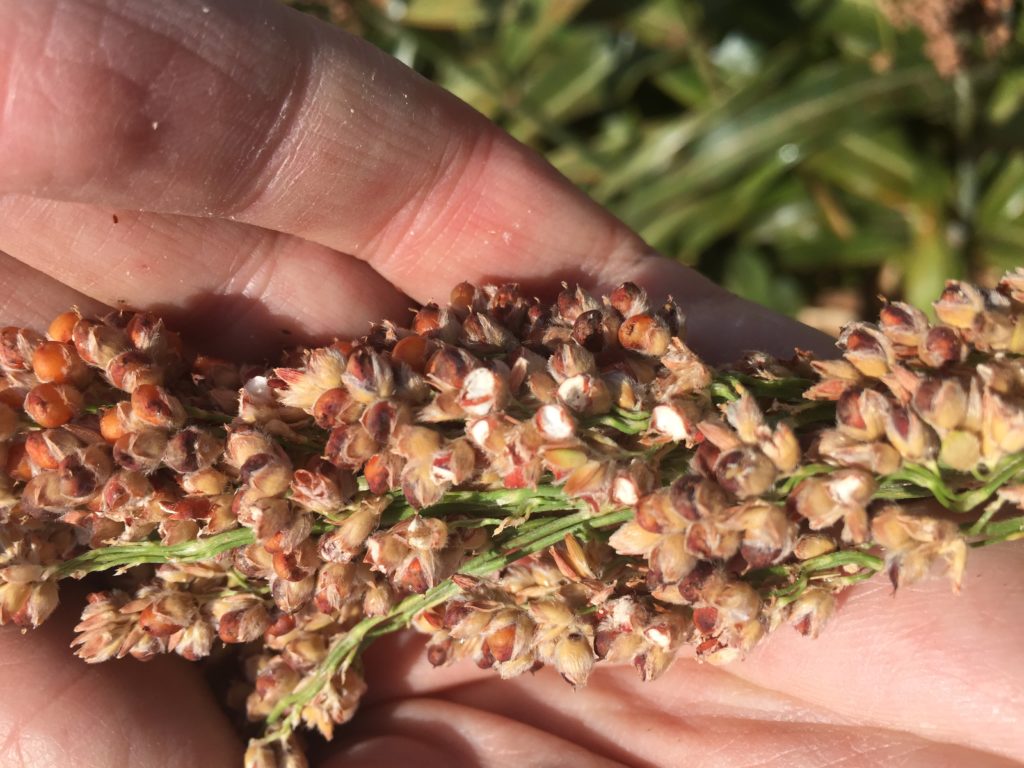Grasshoppers
There are more than two dozen species of grasshopper in Kansas, but the most abundant species in sorghum tend to be the migratory grasshopper, Melanoplus sanguinipes (Fig. 1), and the differential grasshopper, Melanoplus differentialis (Fig. 2).
 |
 |
 |
Fields and border areas should be scouted in early summer while grasshoppers are still small and unable to fly. Treat the borders of sorghum fields if grasshopper nymphs are abundant on marginal vegetation (15 to 20 per square yard), as this should prevent their migration into the sorghum. In sorghum fields, populations of five to eight nymphs per square yard may justify treatment. Unlike headworms, which will only feed on grain up to the soft dough stage, 'hoppers will feed well into the hard dough stage, leaving large, white feeding scars on the grain (Fig. 3). However, most grasshoppers are adults by the time sorghum is heading, and treatment of adult swarms is not economically justified. Adults are notoriously difficult to kill, and swarms can fly considerable distances. Even good control of a particular swarm does not guarantee it won't be replaced by another one a day or two later.
Please refer to the most recent version of the Sorghum Insect Management Guide for specific control recommendations.
Page last updated on 10/16/2024 by J.P. Michaud.